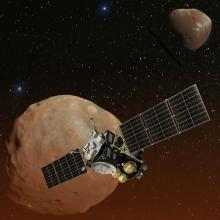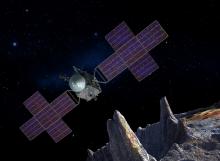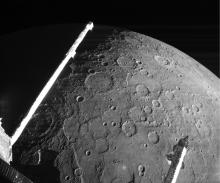Listen to today's episode of StarDate on the web the same day it airs in high-quality streaming audio without any extra ads or announcements. Choose a $8 one-month pass, or listen every day for a year for just $30.
You are here
More Moon and Venus
For the first three decades of the Space Age, Venus was the belle of the ball. Through the 1980s, the United States and the Soviet Union dispatched about 30 missions to the brilliant planet. In fact, Venus was the target of the first successful mission to any planet, and the Soviets landed several craft on its surface.
Since then, though, Venus has been left pretty much alone. A few craft have peeked in when they used Venus to get gravitational “kicks” to other planets. But Venus has been a main target for only a handful of missions.
There are several reasons for the change. One is the success of many of the earlier missions, which answered a lot of questions about the planet.
Another is that it’s tough to build something that can last for very long on the surface of Venus. Because of its hot, dense, toxic atmosphere, nothing has survived for more than about an hour. And it’s hard to explore a world if you only get hour-long peeks.
Some recent work has produced electronics that might be able to survive much longer. In tests, they lasted for weeks in a simulated Venus environment. If those systems can be certified for spaceflight, they might make it possible to get our first long look at the surface — perhaps rekindling the infatuation with the beautiful planet.
And Venus is in good view in the early morning sky. It’s the brilliant “morning star.” Tomorrow, it perches quite close to the crescent Moon — a great way to greet the dawn.
Script by Damond Benningfield






